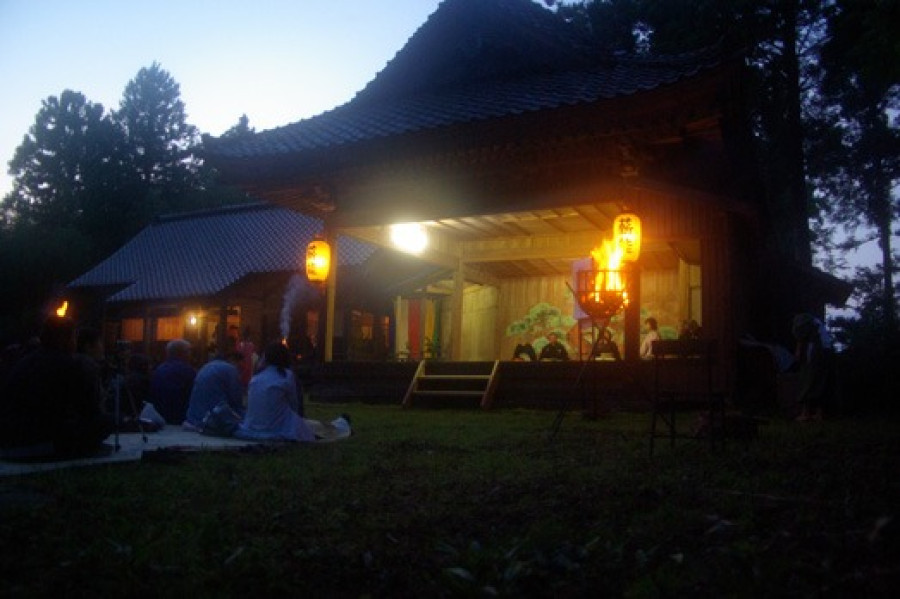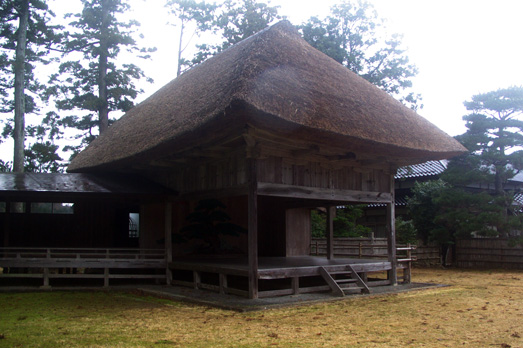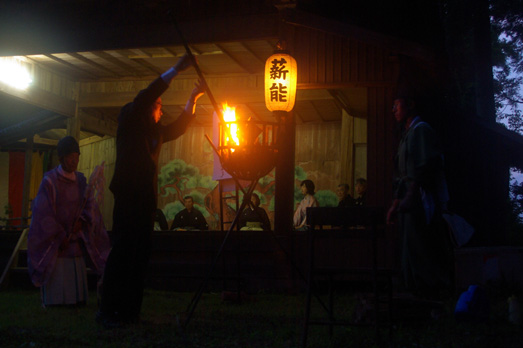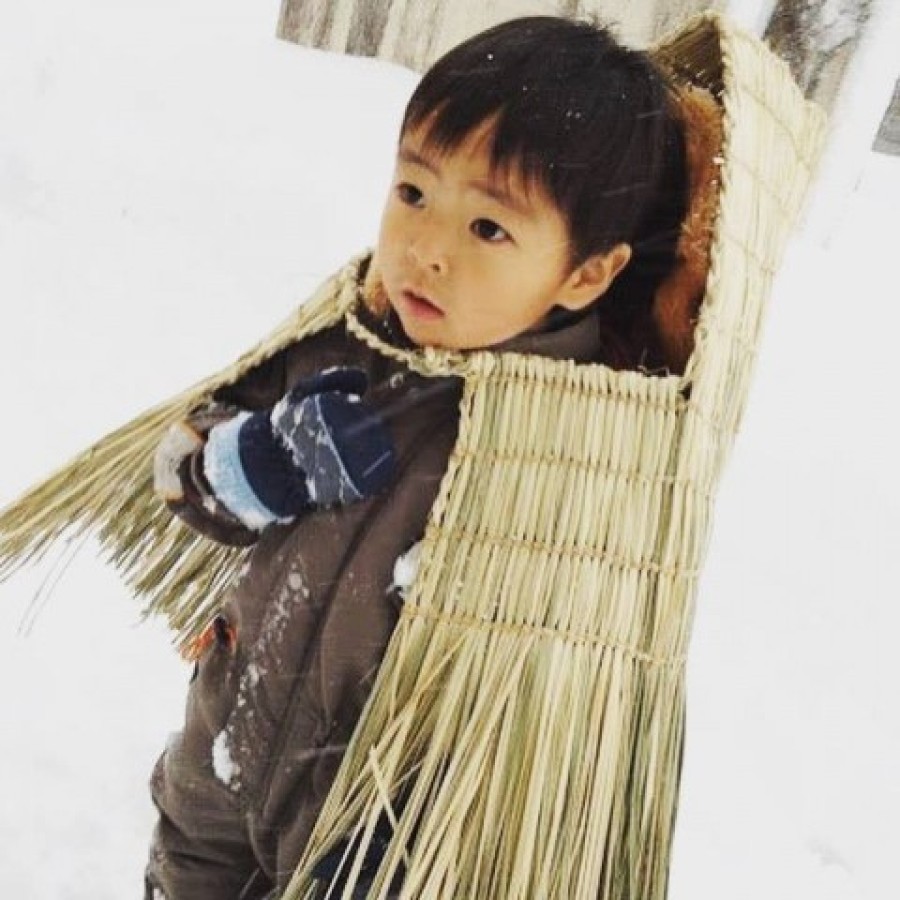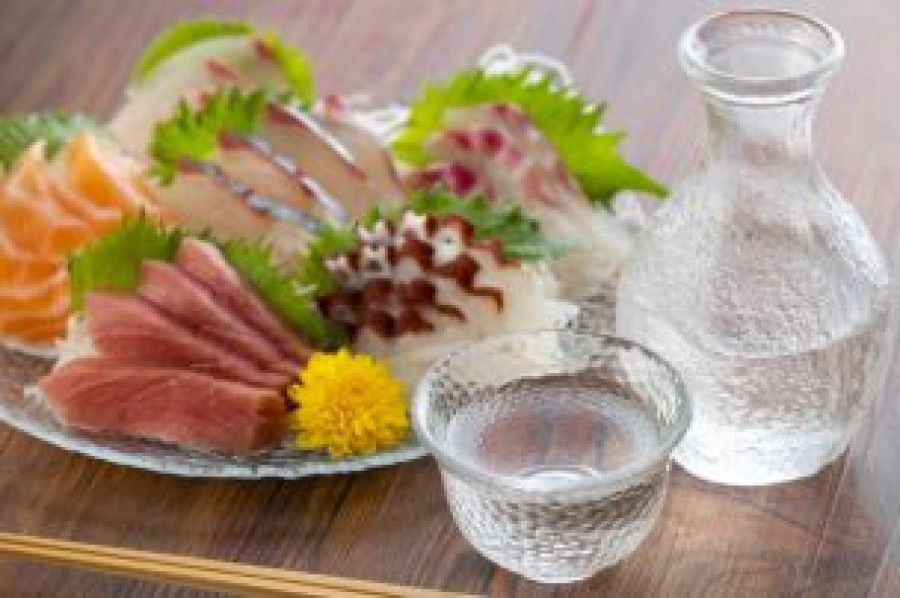Sado' is also famous for 'Noh'.
Sado was considered an island of exile in the past (until around the Muromachi period). However, those exiled to Sado were political prisoners, including Emperor Juntoku, other members of the imperial family, aristocrats, Buddhist monks and cultural figures. Among them was Zeami, known as the great master of Noh.
However, it seems that it was not Zeami who popularised 'Noh' on Sado.
It was not until the Edo period that 'Noh' became widespread on Sado Island.
When the Sado gold mine was discovered, the Tokugawa Shogunate placed Sado under its direct control and appointed Nagayasu Okubo as the first Magistrate of Sado. Okubo Nagayasu's grandfather was a Noh actor, and it is said that he widely promoted Noh to the people of Sado.
As a result, it was said that farmers on Sado would hum 'Noh' while farming. It is very rare for Noh to have spread so widely among the general population.
1/3 of the country's Noh stages are concentrated on Sado Island.
Against this background, more than 30 Noh stages still remain on Sado Island. This is said to account for 1/3 of all Noh stages in Japan, most of which are located on the grounds of temples and shrines.
One of the most representative Noh stages is the Daizen Shrine Noh Stage in Mano Town here.
This is a magnificent Noh stage with a thatched roof. The surrounding lush green lawns are wonderful, and the tranquil setting is indescribable.
Of course, it is not just the Noh stages that are preserved. From spring to autumn, Noh performances are held on Noh stages all over the island. Most of these are 'takigi-noh', which are performed at night with a firewood fire.
June in particular is usually called 'Noh Month', with numerous Noh performances taking place every weekend.
'I've been to see the 'Firelit Noh Play'.
In June the year before last, I attended the 'Takei Kumano Shrine Firelit Noh Play' in the Shinbo Takei area, and this is a report of that performance.
During this time, 'shimai' dances are performed by local children. This shows how firmly established Noh is on Sado Island, with children performing Noh from childhood.
The area is completely dimmed and the precincts are enveloped in an indescribably ethereal atmosphere.
The performance of the day was Kiku Jido.
Some kind of turret (yagura) like props appeared.
The storyline of the 'Chrysanthemum Ciudong' story generally goes something like this.
The story takes place in ancient China. An imperial envoy receives an imperial order to explore the waters of the mysterious water spring of *Rekken Mountain, where he meets a mysterious boy. (Note: *=Leiken Mountain)
The mysterious boy, who has been alive for seven hundred years, dances in a pure and elegant manner surrounded by chrysanthemum flowers.
Incidentally, visitors are given a manual so that even those who are not familiar with Noh can understand and enjoy the story.
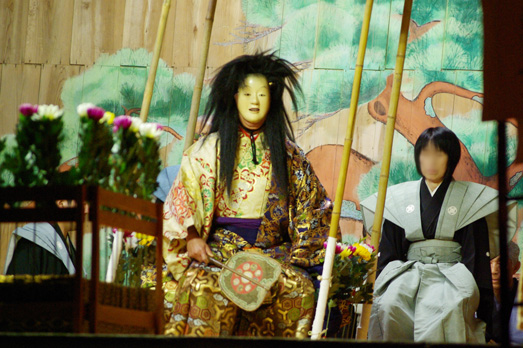 舞台に置かれた大道具の幕が外れると、中から謎の少年が登場し、菊の花の前で舞い続けます。
舞台に置かれた大道具の幕が外れると、中から謎の少年が登場し、菊の花の前で舞い続けます。
 実はこの「薪能」は、写真撮影OKでした。ただしフラッシュ焚くのは禁止です。
実はこの「薪能」は、写真撮影OKでした。ただしフラッシュ焚くのは禁止です。
That is why there are many people with cameras with large lenses attached and tripods.
Sado's 'wood-fired Noh plays', which can be enjoyed casually.
Seating is free, there are no chairs, and the viewing takes place either on plastic seats or on the grass.
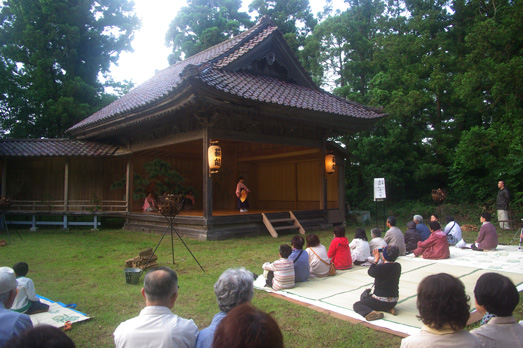 実は佐渡の「薪能」の多くは、鑑賞料が無料!のものから500円ほどと、たいへん敷居が低くなっています。(中には2, 500円ほどの演能もあります)
実は佐渡の「薪能」の多くは、鑑賞料が無料!のものから500円ほどと、たいへん敷居が低くなっています。(中には2, 500円ほどの演能もあります)
On the mainland, it would normally cost several thousand yen to watch a Noh play, but because Noh is so widespread on Sado Island, it is possible to enjoy Noh in a casual way.
Even if you have never seen Noh before or are not familiar with it, this price range will make you think that you might like to give it a try.
advertisement


